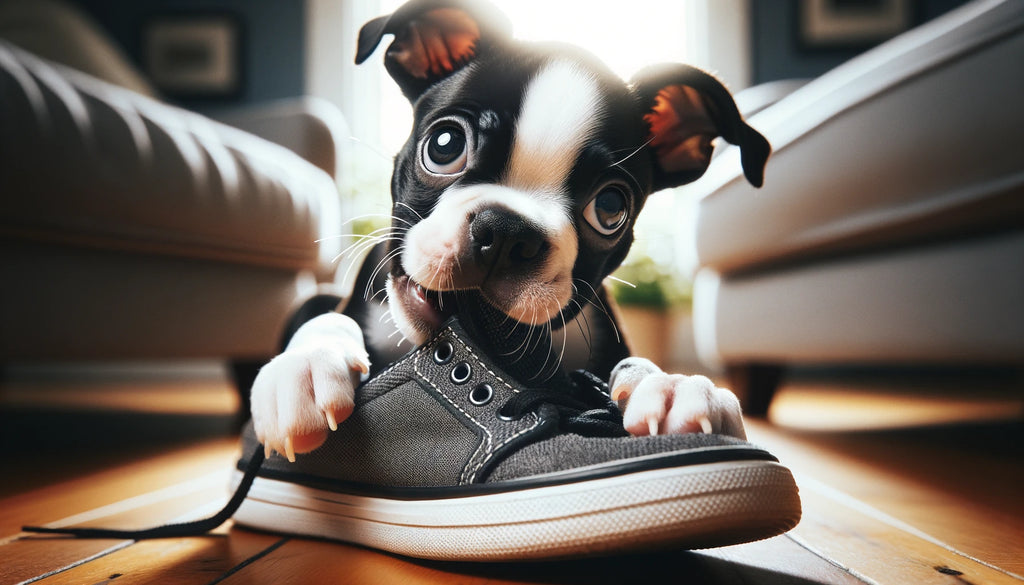
Puppies are adorable, playful, and full of energy, but they also have a natural tendency to bite and chew. This behavior is normal, as puppies explore the world with their mouths and use biting as a way to communicate and relieve teething discomfort. However, it's important to teach your puppy not to bite or chew on inappropriate objects, including your hands and furniture, to ensure they grow into well-behaved adult dogs. Here are some effective tips on how to train a puppy not to bite or chew:
1. Understand the Behavior
Before you start training your puppy, it's important to understand why they bite and chew. Puppies bite for several reasons:
- Teething: Puppies go through a teething phase where their gums are sore, and biting helps relieve the discomfort.
- Play: Biting is a natural part of play for puppies, as they would do with their littermates.
- Exploration: Puppies explore their environment with their mouths, which can lead to biting and chewing.
2. Provide Appropriate Chew Toys
One of the best ways to prevent inappropriate chewing is to provide your puppy with a variety of chew toys. These toys should be durable and safe for your puppy to chew on. Rotate the toys regularly to keep your puppy interested, and praise them when they chew on their toys instead of your belongings.
3. Redirect Biting Behavior
If your puppy starts biting your hands or clothes, redirect their attention to a chew toy. This teaches them that it's okay to bite their toys but not you. Consistently redirecting their behavior will help them learn what is acceptable to bite.
4. Use Positive Reinforcement
Positive reinforcement is a powerful training tool. When your puppy chews on their toys or refrains from biting, reward them with praise, treats, or playtime. This reinforces the desired behavior and makes it more likely to be repeated.
5. Teach Bite Inhibition
Bite inhibition is the ability of a dog to control the force of their bite. You can teach this by letting out a yelp or saying "ouch" in a firm voice when your puppy bites too hard. This mimics the reaction of their littermates and teaches them to be gentler.
6. Set Boundaries
It's important to establish boundaries with your puppy. If they continue to bite after you've redirected their behavior or expressed pain, end the play session and walk away. This sends a clear message that biting is not acceptable and playtime ends when they bite.
7. Supervise Playtime
Always supervise playtime between your puppy and other pets or children. Puppies can get overexcited and may bite more during play. By supervising, you can intervene and redirect their behavior as needed.
8. Be Consistent
Consistency is key in training. Make sure all family members are on the same page and follow the same rules and commands when interacting with your puppy. This helps prevent confusion and ensures that your puppy learns the desired behavior more quickly.
9. Provide Plenty of Exercise
A tired puppy is less likely to engage in destructive behavior. Ensure your puppy gets plenty of exercise through walks, playtime, and mental stimulation. This will help burn off excess energy and reduce the likelihood of biting and chewing.
10. Seek Professional Help if Needed
If your puppy's biting or chewing behavior persists or becomes aggressive, consider seeking help from a professional dog trainer or behaviorist. They can provide personalized guidance and support to address the issue effectively.
Conclusion
Training a puppy not to bite or chew requires patience, consistency, and positive reinforcement. By understanding the reasons behind the behavior, providing appropriate chew toys, and setting clear boundaries, you can help your puppy develop into a well-behaved adult dog. Remember that every puppy is different, and what works for one may not work for another. Stay flexible and adjust your training approach as needed to ensure the best results for you and your furry friend.

